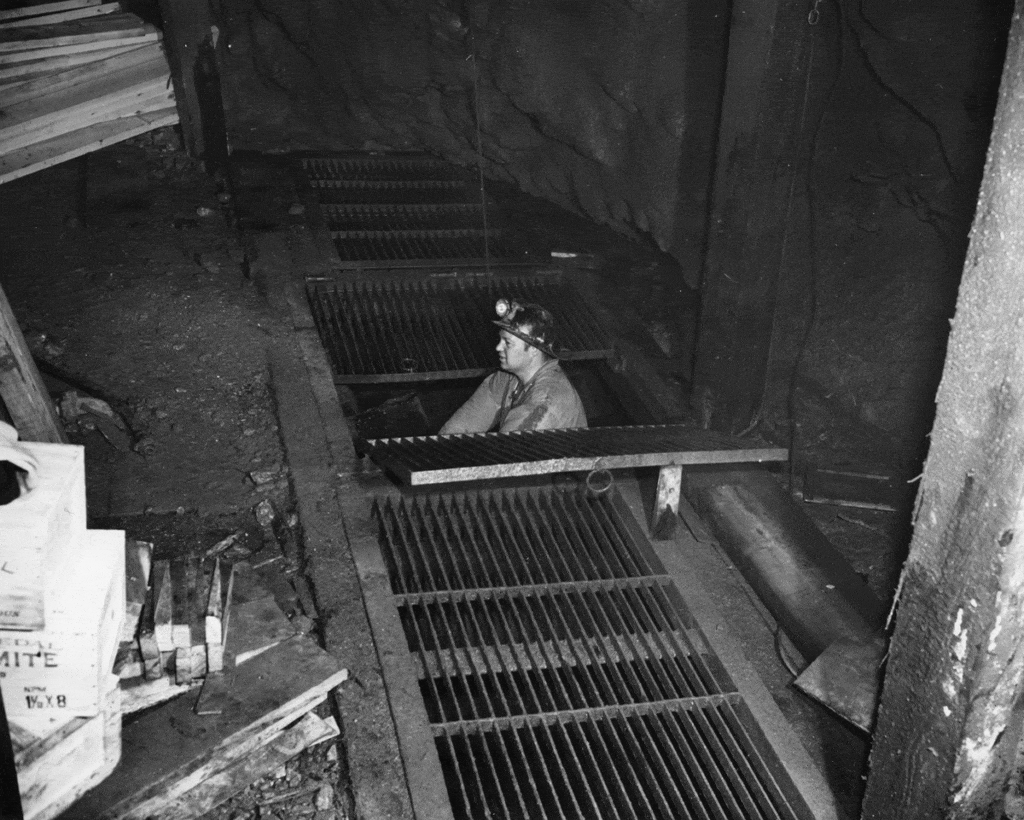In the previous two articles we confirmed the Mayflower’s “unique” history in the Park City Mining District. This article continues that discussion with a twist – resurrection.
The 1971 New Park Annual Report predicted that profitable operations were not sustainable beyond 1972. The price of gold was $64 an ounce. The Mayflower closed. With the pumps removed, the mine flooded with an estimated 150 million gallons of water. The shaft, tunnels and gold remained, albeit submerged.
Gold is scare and valuable. The chemical symbol for gold – Au – derives from Aurora, which means shining dawn. The appearance of gold is not capricious. Its presence follows natural laws, including the relationship between gold deposits found in igneous and sedimentary rocks and active geothermal systems. Remember – the Mayflower was the only “hot mine” in the Park City Mining District.

If anyone would like to donate images of the Mayflower from the 1960s, please contact our Curator of Collections and Exhibits, Courtney, at ctitus@parkcityhistory.org.
Credit: Park City Historical Society and Museum, Kathy Herbst Collection
In 1975, New Park and LON Investment Company (to which New Park had sold their landholdings) created a subsidiary: Consolidated Mayflower Mines Inc (CMMI). Each company executed a long-term mining lease granting mineral rights to CMMI.
During the late 1970s, a study indicated that 175,000 tons of ore could be profitably mined, yielding up to 75,000 troy ounces of gold. Gold had been deregulated and the price soared to $800 an ounce. With these historically high prices, New Park contracted Noranda Mining Company, which was operating the Ontario Mine, to resume operations at the Mayflower. However, the agreement was abruptly canceled when Noranda withdrew from all their US interests.
In December 1977 LON sold their property to two Dutch investment groups collectively known as “the Stichtings,” who still own the land. A condition of the sale stipulated that “should mining ever resume” the Stichtings were entitled to a 0.6% royalty on Net Smelter Returns. But their main interest was resort development, not gold.
In the early 1990s, there was a flurry of legal activity regarding the possible reopening of the Mayflower – a resurrection!
The impetus was the construction of the Jordanelle Reservoir, necessitating the relocation of US 40. To accomplish this, the government had exercised its power of eminent domain to take 18 acres from Mayflower holdings. This land grab did not include the mineral rights which were owned by CMMI.
The Stichtings and the government agreed on a price of $67,500 for the land but CMMI said “not so fast” – the property was worth significantly more if the mine was reopened.
Gold at that time was $443 an ounce. The Stichtings refused any plans to reopen the mine as it could jeopardize their development plans. Further financial, environmental and legal reviews eventually eroded CMMI’s enthusiasm to “get the gold.”
The opportunity for a “golden” resurrection dissipated. However, with the property currently for sale another chapter in the unique history of the Mayflower Mine awaits us!
My thanks and appreciation to Keith Droste for his tireless patience with my near-limitless questions in researching this three-article series. Keith served as mine superintendent of the Mayflower from 1966 through 1969.